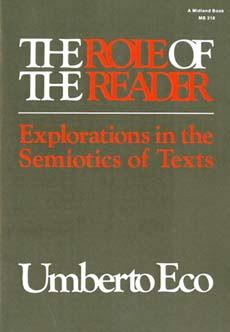
Zustellung: Fr, 20.12. - Sa, 28.12.
Versand in 3-4 Wochen
VersandkostenfreiBestellen & in Filiale abholen:
In this collection of nine essays, Umberto Eco sets forth a dialectic between 'open' and 'closed' texts, between a work of art that actively involves the 'addressee' in its production and one that holds the 'addressee' at bay and seeks to evoke a limited and predetermined response. He investigates the contributions of contemporary semantics to the study of narrative, and connects the modalities of textual interpretation with the problem of possible worlds.
Inhaltsverzeichnis
Preface
Introduction: The Role of the Reader
I. Open
1. The Poetics of the Open Work
2. The Semantics of Metaphor
3. On the Possibility of Generating Aesthetic Messages in an Edenic Language
II. Closed
4. The Myth of Superman
5. Rhetoric and Ideology in Sue's Les Mysteres de Paris
6. Narrative Structures in Fleming
III. Open/Closed
7. Peirce and the Semiotic Foundations of Openness: Signs as Texts and Texts as Signs
8. Lector in Fabula: Pragmatic Strategy in a Metanarrative Text
Appendix 1
Appendix 2
Bibliography
Introduction: The Role of the Reader
I. Open
1. The Poetics of the Open Work
2. The Semantics of Metaphor
3. On the Possibility of Generating Aesthetic Messages in an Edenic Language
II. Closed
4. The Myth of Superman
5. Rhetoric and Ideology in Sue's Les Mysteres de Paris
6. Narrative Structures in Fleming
III. Open/Closed
7. Peirce and the Semiotic Foundations of Openness: Signs as Texts and Texts as Signs
8. Lector in Fabula: Pragmatic Strategy in a Metanarrative Text
Appendix 1
Appendix 2
Bibliography
Produktdetails
Erscheinungsdatum
22. Juli 1979
Sprache
englisch
Seitenanzahl
288
Autor/Autorin
Umberto Eco
Verlag/Hersteller
Produktart
kartoniert
Gewicht
445 g
Größe (L/B/H)
234/154/19 mm
ISBN
9780253203182
Bewertungen
0 Bewertungen
Es wurden noch keine Bewertungen abgegeben. Schreiben Sie die erste Bewertung zu "The Role of the Reader" und helfen Sie damit anderen bei der Kaufentscheidung.










